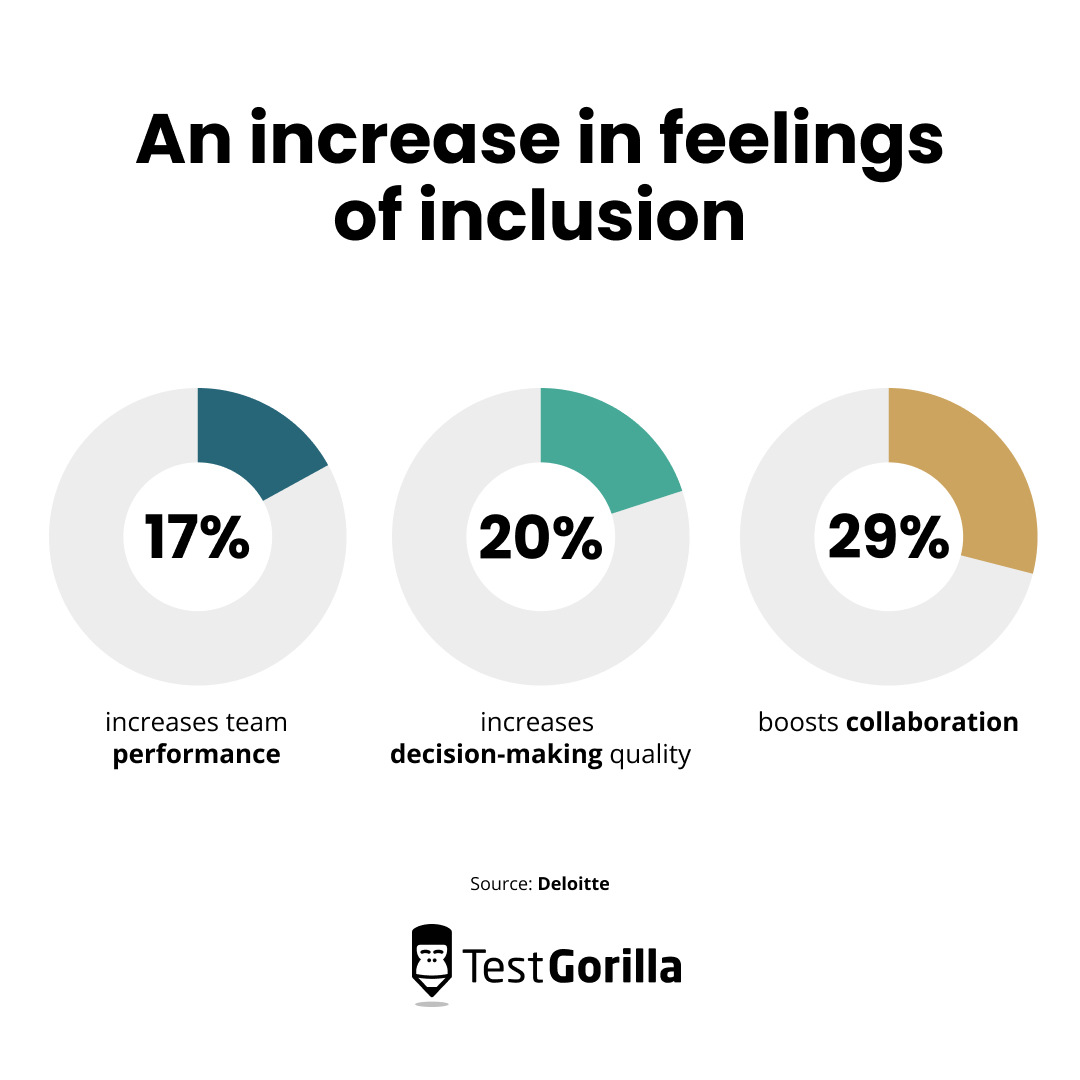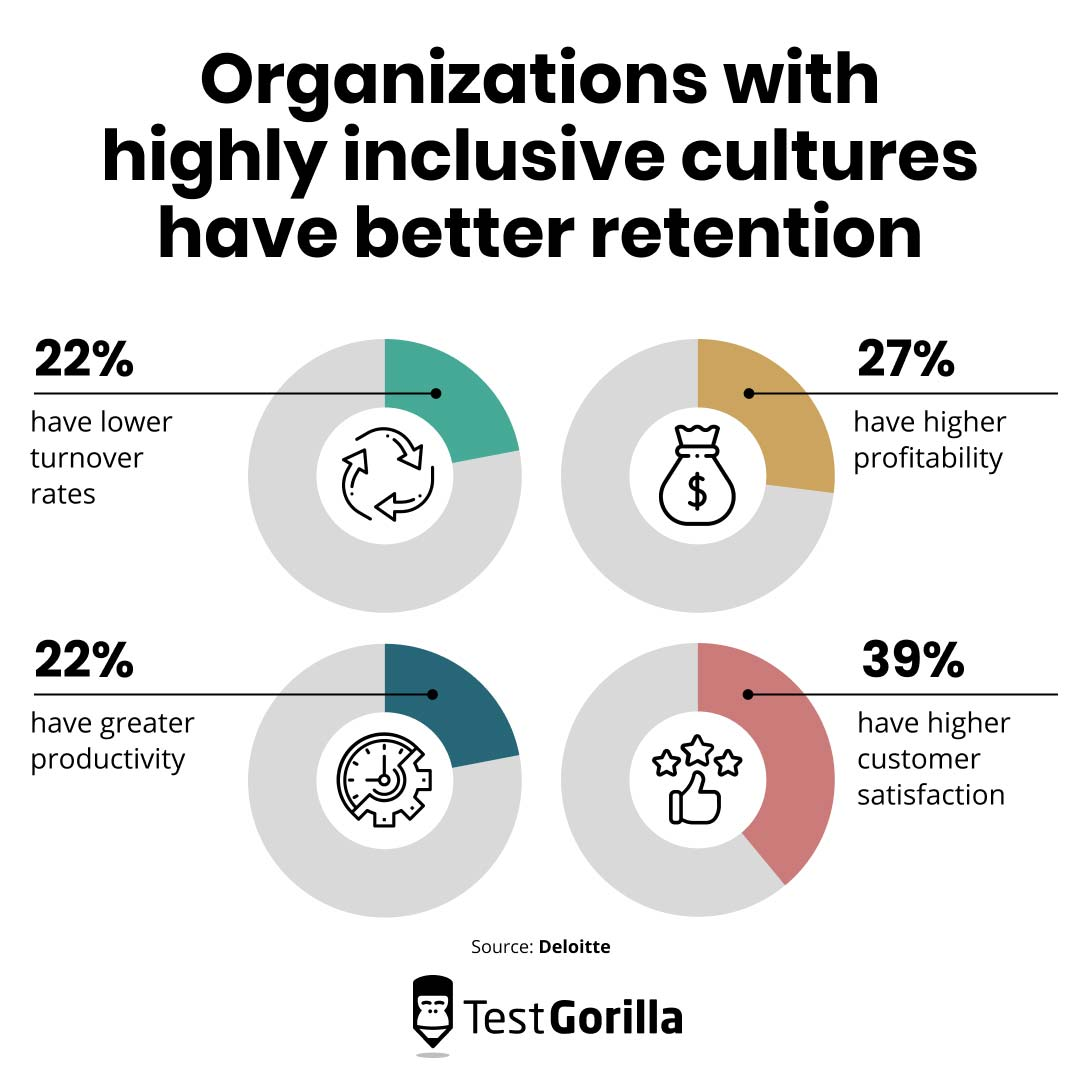Cultural Diversity Training for Inclusive Workplaces
Want to build an inclusive workplace? Learn how cultural diversity training supports collaboration, prevents discrimination, and enhances workplace productivity.
Want to build an inclusive workplace? Learn how cultural diversity training supports collaboration, prevents discrimination, and enhances workplace productivity.

With the rise in remote work culture, workplaces now span continents, cultures, and languages. This global reach brings a rich mix of perspectives, experiences, and values. However, without the tools to embrace this diversity, organizations risk miscommunications and reduced workplace productivity.
This is why cultural diversity training is important. From understanding cultural bias to building cultural competence, it creates a safe space where every voice is heard. More than a moral obligation, this inclusion acts as a strategic advantage. Research from McKinsey shows that companies with culturally diverse teams show 36% higher profitability.
In this blog, we’ll break down cultural diversity training, why it matters, and how organizations can implement it successfully.

Cultural diversity training refers to inclusive learning designed to help employees navigate cultural differences with awareness, empathy, and respect. It equips workforces with the tools to understand different perspectives and social norms. This understanding helps in navigating employee expectations that stem from diverse cultural backgrounds.
However, it shouldn't feel like a forced session where employees passively sit through hours of being told to “be respectful.” Instead, the goal is to shift employee mindsets. It helps individuals recognize their own unconscious biases and adjust their behaviors accordingly.
Research by Deloitte reveals that inclusive teams outperform their peers by 80% in team-based assessments. This statistic further backs the importance of cultural diversity training as a foundational pillar of a thriving workplace.
Promoting inclusivity and arranging cultural diversity training is not a recent corporate trend. It is an essential part of all workplaces that helps teams work better together. Here's how cultural diversity training transforms workplaces:

Promoting diversity is not enough. Organizations must foster an environment where differences are understood and respected, so nobody feels left out. While diversity brings people to the door, inclusivity invites them to stay and contribute to the workplace culture.
Fortune 1000 companies in the US alone spend approximately $1.5 million per year on diversity and inclusion programs. When employees feel seen and heard, they feel a sense of belonging, which boosts their morale, engagement, and performance.

Research shows diverse companies make better decisions 87% of the time. This is supported by a mindset shift that comes with diversity. It encourages employees to approach challenges from multiple perspectives and encourages feedback across cultures. This contributes to a shared sense of purpose within the team.
When employees know their voice matters, they become more invested, resulting in better outcomes. Monthly surveys and anonymous feedback can help you improve this sense of value and engagement.
In both on-site and remote work models, respectful communication across time zones and cultures is essential. Cultural diversity training helps bridge the gap between different working styles, communication preferences, and expectations.
By building mutual understanding and shared respect, employees can collaborate more effectively. The Oxford Research Encyclopedia supports this, mentioning that multicultural teams with the same goals can draw benefits from cooperation.
Unconscious bias, microaggression, and stereotyping often arise from a lack of cultural understanding. By educating employees on different cultural norms, workplaces can significantly reduce discrimination and build a safe space. Teaching appropriate language, workplace etiquette, and cultural sensitivity reduces conflicts and helps prevent discrimination.
A comprehensive review of diversity and inclusion training outcomes reported that 80% of studies showed positive outcomes. This includes improvements in cultural knowledge, participants’ attitudes, and skills.

When employees feel valued and celebrated, they are more likely to stay committed in the long term. In fact, companies that support inclusion see 5.4 times higher retention rates.
High retention rates mean lower recruitment costs, better team cohesion, and improved organizational knowledge over time. It also boosts morale, as employees are more engaged when they work in a stable, inclusive environment.
A well-designed cultural diversity training program blends psychology, behavior, and communication into practical tools. Here are a few core topics that are included in high-impact training:
Unconscious bias subtly influences how people make decisions, whether it's reviewing résumés or interacting with colleagues. Cultural diversity training acts as a practical guide to uncover and address these hidden biases. Through guided exercises and reflection, participants learn how unconscious assumptions shape their choices, often without even realizing it.
Cultural competence is the ability to read and respond to diverse behaviors, values, and norms without judgment. This ensures your employees learn how to decode body language, tone, and formality. For example, an action that is perfectly polite in one culture might be considered rude in another culture. Cultural diversity training helps people learn how to stay open, curious, and adaptable in the face of difference.
Inclusivity goes beyond simply avoiding offense. It’s about ensuring every voice is seen, heard, and valued. Cultural diversity training equips employees with practical strategies to build this kind of environment. It shifts the focus from “what not to say?” to “how can I create a meaningful impact?”
Employees are encouraged to reflect on how they can contribute, support one another, and foster a culture rooted in respect.

Teamwork requires trust, communication, and shared understanding. But cultural differences can often hinder this connection and cause miscommunications. Training in cross-cultural team collaboration focuses on navigating diverse leadership styles, decision-making, and conflict resolution methods. The aim is to equip employees with the tools to work smoothly with differences.
Microaggressions are small, everyday actions that communicate bias or disrespect, even when unintentional. These include offhand comments, assumptions, and jokes that make people uncomfortable.
Cultural diversity training teaches employees how to identify these moments in real life. It also helps them become more mindful of their words and actions, so others aren't negatively affected by them.
Let’s take a look at some examples of companies with well-designed training programs. These programs often lead to measurable outcomes like innovation, retention, and team performance.
Microsoft integrates its cultural diversity training directly into its leadership training programs. Leadership across global teams participates in diversity and inclusion by increasing the representation and prioritization of minority groups. It also has inclusive design workshops where cross-cultural innovation is encouraged to develop better products and services. Moreover, they launched a Racial Equity Initiative in 2021, which remains an ongoing commitment.
Cultural diversity training is one of the core components of Google’s working policy. They have set a clear goal to increase leadership representation of minority groups in the US by 2025. Google plans to focus on enhancing leadership and mentorship programs, expanding employee resource groups, and promoting inclusive leadership training. Beyond compliance, the company treats diversity as a driver of innovation.
Johnson & Johnson has earned its reputation as a leader in workplace diversity and inclusion. It hosts several initiatives, including the Johnson & Johnson diversity and inclusion honors, and is also part of the UN’s Unstereotype Alliance. Such efforts create space for employees to celebrate their identities and contribute to the workplace.
Here are some cultural diversity training tips to make your program impactful and tailored to the unique needs of your team.

Before designing a training program, it’s essential to understand where your organization stands in terms of diversity and inclusion. Conduct anonymous surveys, host focus groups, and hold one-on-one interviews to identify inclusion gaps and common communication barriers. You need to assess everything, from hiring processes to team dynamics.
This data will help build a relevant program that directly speaks to your employees. Without a thorough cultural audit, your training risks being too generic or missing the mark entirely.
A well-executed audit can reveal patterns of exclusion, underrepresented voices, and communication gaps that usually go unnoticed.
Whether you’re aiming to reduce bias in the workplace or strengthen collaboration among your team, define the outcomes first. Tailoring training content to your business goals ensures employees see relevance and stay engaged, rather than sitting through the training.
Analyze your employees’ behaviour and general attitude towards their colleagues. This will help you plan training content that reflects workplace experiences. When training feels personalized and actionable, employees are more motivated to apply it.

In today’s hybrid or remote workspaces, digital e-learning platforms offer a practical solution for delivering flexible training. Self-paced modules, live webinars, and microlearning videos allow employees to absorb content at their own pace.
It also helps you keep your content relevant by updating information as employee demographics and cultural norms evolve. When training is flexible, scalable, and easily accessible, completion rates increase.
Try Coursebox eLearning Platform: Coursebox is an AI-powered eLearning platform that offers interactive and engaging training courses for your employees. From AI video generators to quiz generators, it allows users to build training courses that employees are interested in.
Cultural diversity training can fall flat if the content is not planned well. To make an impact, you need to make sure the content is engaging and not based on generic workplace ethics.
Be mindful when tackling topics like privilege and bias, as they can make people uncomfortable. You can use storytelling, role-play, humor, and real-life experiences to break the ice and make learning engaging. Ensure two-way communication and encourage your employees to share their experiences and input to keep them involved.
Diversity training shouldn’t stop at the end of a course. You can incorporate it into your workplace by celebrating different cultural events throughout the year. This helps people from different backgrounds feel welcomed and at home. Encourage employee resource groups to host events, panels, and group discussions that impart awareness regarding different cultural norms.
When employees see their culture valued and respected at work, they become more committed to the workplace. It also helps connect co-workers by sharing their traditions and cultures, encouraging conversations among people from different departments.
Cultural diversity training is one of the most impactful tools organizations can use to shape their workplace. When employees learn to recognize bias and understand cultural norms outside their own, the workplace environment completely shifts.
It makes workplaces more adaptable, trustworthy, and creative. Moreover, companies that invest in diversity training position themselves as forward-thinking organizations. They attract top talent, retain high performers, and attract customers from different cultures.
To ensure your company checks all these points, you need cultural diversity training. Coursebox is here to help you build an inclusive workplace. With its innovative features, such as an AI course generator, a quiz generator, and an LMS, you can easily implement diversity training at your workplace.
The 4 C’s of cultural diversity are curiosity, comfort, clarity, and confidence. These elements form the foundation of an inclusive environment. With the help of these 4 C’s, you can establish respectful cross-cultural interactions, reduce misunderstandings, and improve team collaboration.
Here are a few tips to successfully handle cultural diversity in the workplace:
Challenges of cultural diversity in the workplace include unintentional bias, communication barriers, and resistance to change. To address these challenges, organizations should implement cultural diversity training programs in the workplace to ensure everybody feels seen and valued.
You can make diversity training fun and engaging by incorporating interactive elements and team-building exercises. Encourage employees to share about their cultural events and traditions to raise awareness. Also include storytelling segments, trivia games, role-playing, and even a potluck where everybody brings a dish popular in their culture to raise awareness.
Platforms that help implement cultural diversity include Coursebox, Coursera, LinkedIn Learning, and Kahoot!. These platforms allow you to create engaging training programs, track employee progress, and gain direct feedback. Among these platforms, Coursebox leads the way by offering AI-powered course creation, tailored to your employees' needs. It also offers an interactive AI chatbot trainer, an AI quiz generator, and an AI LMS to make training even more productive.
